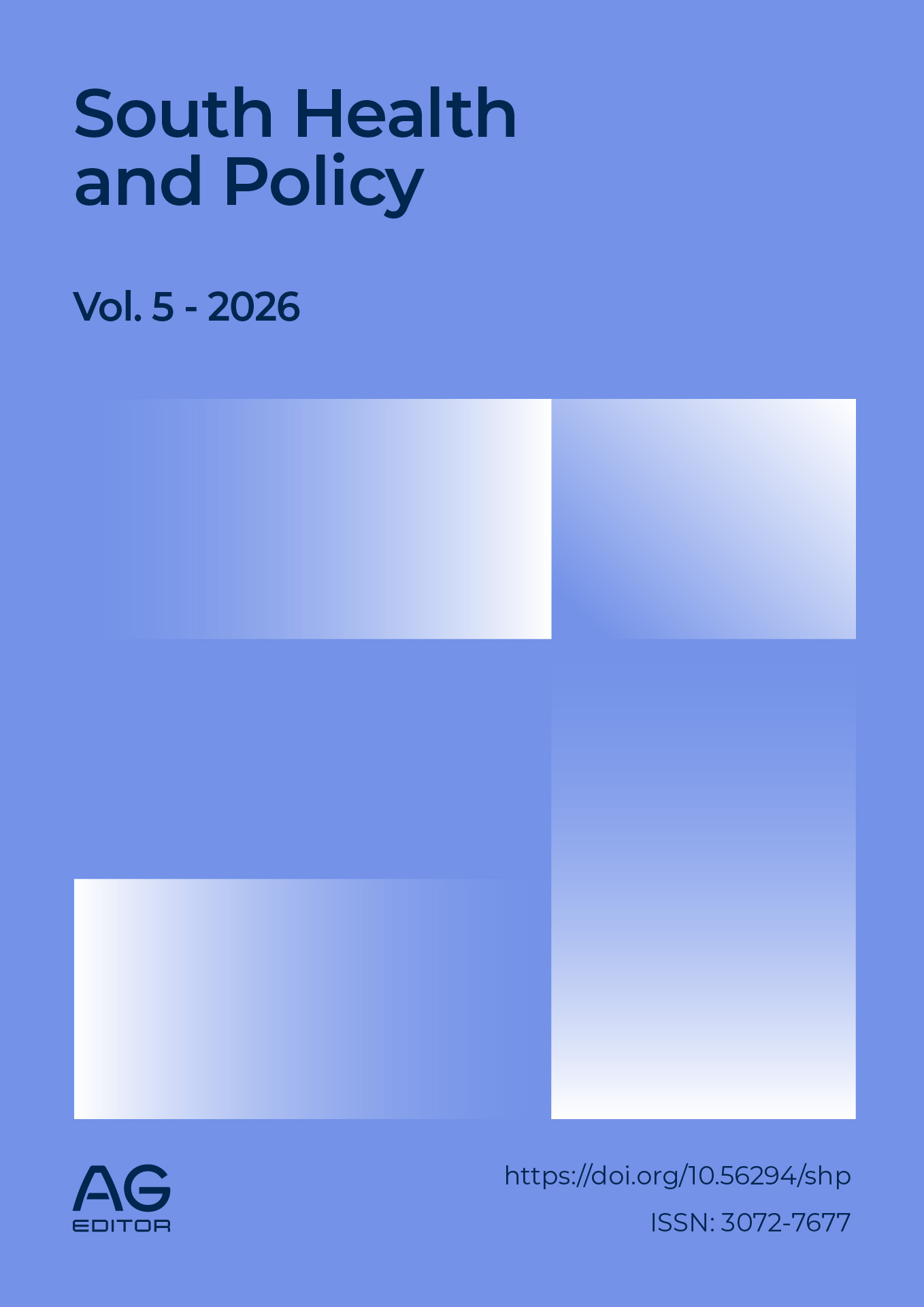Factors that impact in the answer of the ulcers from the diabetic foot to the Heberprot-P®.
DOI:
https://doi.org/10.56294/shp2026382Keywords:
Diabetes mellitus, Factors of Risk, Diabetic foot, Heberprot-P®Abstract
Introduction: the diabetes mellitus constitutes a problem of health to world scale for its growing incidence and for its complications, mainly associated to the vascular damage that you/they usually present, as the ulcer of diabetic foot that can take to the amputation and discapacidad. Objective: to identify the factors that impact in the answer of the ulcers from the diabetic foot to the Heberprot-P® in patient belonging to the policlínico September 5, Consolation of the South, Pinegrove of the River, in the period of January 2022 and January of the 2024. Method: he/she was carried out an observational, analytic, and traverse study. The universe was represented by all the diabetic patients (n=1875) belonging to the selected policlínico and the sample for those with ulcer of the diabetic foot, treaties with Heberprot-P®. (n=28). the theoretical, empiric and statistical methods were used. Results: the patients prevailed with more than 70 years (64.2%), feminine sex (65.3%) and white color of the skin (71%). The arterial hypertension (56.3%) and the obesity (8.6%) they are the observed pathological antecedents. The most frequent localization in the ulcers was the region metatarsiana (28.57%), 60.7% of these lesions healed before the 3 months. the time of cure of the lesion showed statistical relationship with the presence of obesity, tabaquismo and an inadequate feeding and the biggest age. Conclusions: the age, obesity, the tabaquismo and the alimentary habits were factors that impacted in the answer of the ulcers from the diabetic foot to the Heberprot-P®.
References
1. Jiménez Romero. O , Vázquez Argote.KR , Labrada Salas.A. Enfermedad renal oculta en población adulta de riesgo perteneciente a un consultorio médico de familia. Revista Electrónica Dr. Zoilo E. Marinello Vidaurreta[Internet]. 2020 [citado 15 agt 2024]; 45(2). Disponible en: https://revzoilomarinello.sld.cu/index.php/zmv/article/view/2115).
2. Lorenzo Díaz J, Vitón Castillo A. Calidad de vida asociada a la hipertensión arterial en el adulto mayor. Rev Méd Electrón [Internet]. 2020[citado 15 agt 2024]; 42(2). Disponible en: https://www.medigraphic.com/pdfs/revmedele/me-2020/me203q.pdf
3. Soler Santana R, Brossard Cisnero M, Vaillant Rodríguez M. Caracterización de pacientes con hipertensión arterial en la provincia de Santiago de Cuba. Medisan [Internet]. 2020[citado 23 agt 2024]; 24(2): 174. Disponible en: http://www.medisan.sld.cu/index.php/san/article/view/2911
4. Hall JE, Guyton. Tratado de fisiología médica. Decimocuarta edición [Digital]. 2021[citado 9 agt 2024].
5. Brutsaert EF. Diabetes mellitus (DM). Manual MSD. [Internet]. 2022 [citado 9 agt 2024].Disponible en: https://www.msdmanuals.com/es/professional/trastornos-endocrinol%C3%B3gicos-y-metab%C3%B3licos/diabetes-mellitus-y-trastornos-del-metabolismo-de-los-hidratos-de-carbono/diabetes-mellitus-dm
6. Calvo Prada S, Pérez Marrugo M, Padilla Vega G, Saray Ricardo L. Enfermedad Renal Diabética: Estado del Arte. Archivos de Medicína [Internet]. 2022[citado 4 mar 2023]; 18(6): 1544. Disponible en: https://dialnet.unirioja.es/descarga/articulo/8540250.pdf.
7. Vinces Chong R, Villamarin Vaca ON, Tapia Mieles AM, Gorozabel Alarcón JM. Diabetes Mellitus y su grave afectación en complicaciones típicas. Polo del Conocimiente [Internet]. 2019 [citado 15 agt 2024]; 4(2). Disponible en: https://www.google.com/url?sa=t&rct=j&q=&esrc=s&source=web&cd=&cad=rja&uact=8&ved=2ahUKEwiHqOXXs-P8AhU2nYQIHeqKC5g4ChAWegQIGhAB&url=https%3A%2F%2Fpolodelconocimiento.com%2Fojs%2Findex.php%2Fes%2Farticle%2Fdownload%2F901%2Fpdf&usg=AOvVaw0Lea).
8. Heredia Morales M, Gallegos E. Riesgo de diabetes mellitus tipo 2 y sus determinantes. Enfermería Global. [Internet].2022[citado 9 agt 2024];5: 188. Disponible en: https://scielo.isciii.es/pdf/eg/v21n65/1695-6141-eg-21-65-179.pdf.
9. MINSAP. Anuario Estadístico de Salud-. Dirección de Registros Médicos y Estadísticas de Salud del Ministerio de Salud Pública de Cuba [Internet]. 2023[citado 9 agt 2024]. Disponible en: https://instituciones.sld.cu/ucmvc/files/2023/10/Anuario-Estad%C3%ADstico-de-Salud-2022-Ed-2023.pdf.
10. Yanes Quesada M. Diabetes mellitus: un problema de salud en Cuba. Revista Cubana de Medicina [Internet]. 2019 [citado 9 agt 2024]; 58(4). Disponible: http://scielo.sld.cu/pdf/med/v58n4/1561-302X-med-58-04-e1319.pdf).
11. Castillo Deprés S, Geoffrey Mothabeng L, Ngcobo T. Heberprot-P en el tratamiento de las úlceras del pie diabético. Revista Cubana de Medicina Militar [Internet]. 2022[citado 9 agt 2024]; 51(3). Disponible en: http://scielo.sld.cu/pdf/mil/v51n3/1561-3046-mil-51-03-e1923.pdf.
12. Cristóbal Ignacio E, Bravo Rey C, Janneth P, Armas Ramírez P. Características clínico-epidemiológicas delos pacientes amputados ingresados a la unidad de pie diabético del Hospital AbelGilbert Pontón, Ecuador. Archivos Venezolanos de Farmacología yTerapéutica [Internet]. 2019[citado 9 agt 2024]; 38(2). Disponible en: https://www.redalyc.org/journal/559/55964524007/55964524007.pdf.
13. Carro G, Saurral R, Witman E, Braver J. Ataque de pie diabético. Descripción fisiopatológica,presentación clínica, tratamiento y evolución. Medicina (Buenos Aires) [Internet]. 2020[citado 24 agt 2024]; 80: 523-530. Disponible en: http://www.scielo.org.ar/pdf/medba/v80n5/1669-9106-medba-80-05-523.pdf.
14. Fabelo Martínez A, Figueroa Martínez A. Evolución de las úlceras de pie diabético con el tratamiento mixto de Heberprot-P® y ozonoterapia. Revista Cubana de Angiología [Internet]. 2019[citado 24 agt 2024]; 20(1). Disponible en: https://www.medigraphic.com/pdfs/revcubangcirvas/cac-2019/cac191c.pdf.
15. Camaño Cerrud L, García Pelegrí S, Concepción R, Mártir González A. Uso de Heberprot-P® en pacientes con úlcera de pie diabético. Revista Cubana de Angiología y Cirugía Vascular. [Internet]. 2024[citado 9 agt 2024]; 25: e477. Disponible en: file:///C:/Users/MILY%202021/Downloads/477-2638-1-PB.pdf.
16. Fernández Montequín J, La O Hernández E, Suen Díaz J. Stimul W® y Heberprot-P® unidos en el tratamiento de la úlcera del pie diabético. Revista Cubana de Angiología y Cirugía Vascular [Internet]. 2021[citado 9 agt 2024]; 22(1): 300. Disponible en: http://scielo.sld.cu/pdf/ang/v22n1/1682-0037-ang-22-01-e300.pdf.
17. Desten Ramos A, Ramirez Moran A, Grave de Peralta R, Wilson Chibás F. Heberprot-P® en úlcera del pie diabético. Policlínico Universitario “Emilio Daudinot Bueno”. Gac Méd Espirit [Internet]. 2020[citado 11agt 2024]; 22(3). Disponible en: http://scielo.sld.cu/scielo.php?pid=S1608-89212020000300044&script=sci_arttext.
18. Carracedo J, Bodega G, Ramírez R, Alique M. El papel del envejecimientoen el desarrollo de enfermedades cardiovasculares asociadas apatologías renales. RIECS [Internet]. 2020[citado 24 agt 2024]. Disponible en: https://www.riecs.es/index.php/riecs/article/view/200/290.
19. Medina Fuentes G, Carbajales León E. Resultados del tratamiento con Heberprot-P® en pacientes con diagnóstico de pie diabético. Revista Cubana de Medicina General Integral [Internet]. 2022[citado 9 agt 2024]; 38(2): 1815. Disponible en: http://scielo.sld.cu/pdf/mgi/v38n2/1561-3038-mgi-38-02-e1815.pdf.
20. López Pérez A, Chiong Muñoz A, Medina Artiles A. Calidad de vida relacionada con salud en pacientes con pie diabético con tratamiento de heberprot-P. Acta Médica del Centro [Internet]. 2023[citado 9 agt 2024]; 17(2). Disponible en: http://scielo.sld.cu/pdf/amdc/v17n2/2709-7927-amdc-17-02-234.pdf.
21. González Consuegra J, Roche Toledo J. Evolución clínica y calidad de vida de pacientes con úlcera del pie diabético tratados con Heberprot-P®. Mediciego [Internet]. 2024[citado 24 agt 2024]; 30: e3911. Disponible en: https://revmediciego.sld.cu/index.php/mediciego/article/view/3911.
22. Camacho Díaz J, Mahía Vilas M, Fernández Montequín I, Peñate Cristofol T. Efecto de la inmunidad celular en el tratamiento de las úlceras del pie diabético con Heberprot-P®. Rev Cubana Angiol Cir Vasc [Internet]. 2023[citado 24 agt 2024]; 24(1). Disponible en: http://scielo.sld.cu/scielo.php?pid=S1682-00372023000100001&script=sci_arttext&tlng=en.
23. 40. Torres Pérez R, Quinteros León M, Pérez Rodríguez M, Molina Toca E. Factores de riesgo de la hipertensiónarterial esencial y el riesgo cardiovascular. Revista Latinoamericana de Hipertensión [Internet]. 2021[citado 24 agt 2024]; 16(4). Disponible en: https://www.revhipertension.com/rlh_4_2021/9_factores_riesgo_hipertensio_arterial.pdf.
24. Arana Calderón C, Chávez Guevara S. Factores asoci.dos a la enfermedad renal crónica en diabéticos tipo 2 atendidos de forma regular en un Hospital I. Rev méd Trujillo [Internet]. 2020[citado 24 agt 2024]; 15(4). Disponible en: https://revistas.unitru.edu.pe/index.php/RMT/article/view/3213/3949.
25. Seguí M, Barrot J, Carramiñana F, Carretero E. Standards of Medical Care in Diabetes 2021. Diabetes Care. [Internet]. 2021[citado 24 agt 2024]; 1: S4-S6. Disponible en: https://static1.squarespace.com/static/645b6183c7b0c30c47e29ce7/t/6462abe334007d05a73a6704/1684188131929/diabetes_mellitus_tipo_2_segun_la_oms.pdf.
26. Mata M, Artola S, Díez J, Ezkurra P, Franch J. Algoritmo de tratamiento de la DM2 de la diabetes mellitus tipo 2 de la red GDPS de 2020. Diabetes Práctica [Internet]. 2020[citado 24 agt 2024]; 11(2): 41-76.Disponible en: http://www.diabetespractica.com/files/1591870964.01_diez-espino_dp-11-2.pdf.
27. Castañeira Jorge E, Febles Sanabria R. Recidiva de úlcera del pie en pacientes diabéticos tratados con Heberprot-P®. Revista Cubana de Angiología y Cirugía Vascular. [Internet]. 2020[citado 3 sep 2024]; 21(2): e135. Disponible en: https://revangiologia.sld.cu/index.php/ang/article/viewFile/135/197.
28. Ascaño Ortega A. Lesiones complejas en pie diabético neuroinfeccioso y su tratamiento con Heberprot-P®. Rev Cubana Angiol Cir Vasc [Internet]. 2020[citado 9 agt 2024]; 21(3). Disponible en: http://scielo.sld.cu/scielo.php?pid=S1682-00372020000300012&script=sci_arttext&tlng=en.
29. Martínez Suárez C. Factores de riesgo del pie diabético en pacientes de la provincia de Cienfuegos. Gaceta Médica Estudiantil [Internet]. 2024[citado 3 sept 2024]; 5(1). Disponible en: file:///C:/Users/MILY%202021/Downloads/140.pdf.
30. González Lozada L. Factores De Riesgo De Pie Diabetico En Pacientes Del Hospital Nacional Dos De Mayo.Enero A Diciembre 2018. Repositorio de Tesis [Internet]. 2021[citado 3 sep 2024]. Disponible en: https://repositorio.upsjb.edu.pe/item/c3ace86c-63ba-40b1-a5f5-7c764e8a475a.
31. Agurto Cruz S. Sobrepeso u obesidad en pacientes diabéticos tipo II con tratamiento Farmacológico del Hospital de Supe, julio-diciembre 2020. Repositorio de Tesis [Internet]. 2021[citado 3 sep 2024]. Disponible en: https://repositorio.uroosevelt.edu.pe/handle/20.500.14140/457.
Published
Issue
Section
License
Copyright (c) 2026 Sergio Alberto Díaz Cruz, Talia Batista Villar, Doraimys Valido-Valdes, Ymirsys Núñez Núñez, José Luis Fernández González (Author)

This work is licensed under a Creative Commons Attribution 4.0 International License.
The article is distributed under the Creative Commons Attribution 4.0 License. Unless otherwise stated, associated published material is distributed under the same licence.






